Whether cooking for a crowd or just for yourself, there are many resources that can come in very quite handy when you’re reading, using, tweaking, or making a recipe. I can tell you that these resources become even more valuable when you’re developing recipes.

I find a lot of helpful information in my forages across the internet and figured it might be handy to share it with you lovely people. I’ll host the growing list Resources page, but plan to add to the list as things cross my radar. Here are some of the resources that help me regularly.
External Resources
Conversion Helpers
Making Egg Substitutions for Different Egg Sizes from get cracking Egg Farmers of Ontario
- As someone who regularly uses jumbo eggs when standard recipe conventions call for large, this conversion helper makes it much easier for me to both scale up and down recipes.
Baking Powder versus Baking Soda from Arm & Hammer’s How To Articles
- You probably know that Baking Soda and Baking Powder are not the same thing. However, if you ever need to substitute one for the other, it can be useful to understand how they differ and how you would need to go about a substitution for a successful outcome. I found this explanation and conversion guide to be particularly well laid out and easy to follow.
Sous Vide Cooking Guides
What is Sous Vide? on How Stuff Works
- If you’ve been reading along, you likely know how much we love sous vide cooking around here. It’s one of those things with a name that can sound intimidating but is actually a really easy, low effort, low stress way to cook.
- This article provides a good explanation of what it is and how it works.
Sous Vide Sausages from Serious Eats
- We do a fair amount of Sous Vide Cooking because it’s so easy, mess-free, and precise for cooking, generally a great way to hold food at temp until you’re ready for it, and a super easy way to thaw frozen foods. My go to temperature guide for cooking sausage is this one from Serious Eats. It gives you a nice table laying out what texture you’ll get from various time and temperature combinations.
Sous Vide Steak Guide from Serious Eats
- While there are various ways to cook steak, our favorite is Sous Vide. It comes in particularly handy when we make steak for a crowd because it allows us to cook them to the desired temperature and safely hold them there until we’re ready to eat. I love this Sous Vide Steak Guide from Serious Eats for its thoroughness. It provides some great charts to help you figure out to what temperature and for how long you need to cook a particular cut of steak to get your desired result.
How to Sous Vide Chicken Thighs (Bone-in and Boneless) from A Duck’s Oven
- While I’ve raved several times about the benefits of sous vide cooking, much of the time, the recipes focus on beef and pork. It’s really wrong for me to neglect chicken from that line-up. Cooking chicken sous vide is a wonderful way to infuse flavor and make sure it gets to exactly the right temperature. No trying to stick a probe thermometer in just the right spot. It’s awesome when cooking chicken for a crown.
- This post lays out a very helpful list of options for time and temperature to give you just the texture you want. I recently used this guide on some bone-in chicken thighs for use in Chicken Tinga.
Quantity Helpers
Cooking For Crowds For Dummies Cheat Sheet from for dummies
- One of the things that can be a challenge when cooking for a dinner party or any kind of party is determining how much food to plan for your guests. Even if you cook for crowds on a regular basis, it can be helpful to have a quick reference to check when you’re making your grocery list. I really like this Cheat Sheet from Cooking For Crowds For Dummies. It covers appetizers, mains, sides, desserts, and beverages.
Cooking Temperatures
Safe Minimum Internal Temperature Chart from the U.S. Department of Agriculture Food Safety and Inspection Service
- The best way to know when your food is done is often to check its internal temperature. While the rules of home cooking are not hard and fast, it is helpful to know what the official guidelines are for different types of food. When in doubt, one of the tools I reference is this “Safe Minimum Internal Temperature Chart” from the USDA.
What’s a Smoke Point and Why Does it Matter? on Serious Eats
- Do you hear the words “smoke point” and wonder “Why do I care?”
- This article does a nice job of explaining what smoke point is, why it matters, and what the smoke points are for various oils and cooking fats (e.g. butter, lard, etc.)
Ingredient Information
A Brief Tour of Mexican Cheeses from The Spruce Eats
- This article provides a helpful, easy to understand overview of some of the most commonly found (in the U.S.) Mexican cheeses.
- I don’t know about you, but trying to keep straight some of the cheeses that I don’t use on a regular basis can be a challenge. Although I’m always up for just trying a cheese to see what it tastes like, knowing things like which ones melt and which ones don’t can come in handy when you just want to get one cheese at the store rather than several.
Serving and Storing Tips (for Cheese) from Cheese.com
- This brief guide to some best practices for storing and serving different types of cheese. There are MANY different types of cheese, so it makes sense that the best way to handle them is not a “one size fits all” rule.
- Are you taking care of your cheese?
Chia seeds pack nutritional punch from Mayo Clinic Health System
- If chia seeds have not made their way into your repertoire, I encourage you to give them a try. They’re high in fiber and omega-3 fatty acids as well as low in net carbs.
- Some of my favorite uses: They make a great overnight pudding or a nice addition to cauliflower rice or scrambled eggs.
Exploring the Benefits and Uses of Nutritional Yeast: Powder vs. Flakes on BulkFoods.com
- Have you ever used nutritional yeast? I first encountered it when working on some dairy-free recipes. It brings a great savory flavor to a dish either as an ingredient or topping.
- I most often use it as a topping on soups or as an ingredient in a dairy-free recipe when I want the sharper notes that I would usually get from parmesan or sharp cheddar cheese.
Butter vs. Oil in Baking on Handle the Heat with Tessa Arias
- Do you ever look at a recipe and wonder why a particular ingredient is being used vs. something categorically similar? (Yep, I’m a nerd like that.) One such ponderance for me is when butter is used vs. oil in baking. I get the smoke point difference in cooking. But baking, what’s the deal?
- This article does a nice job of breaking down the answer to that question with side-by-side examples of what happens with one vs. the other.
What is Psyllium Husk? All about the Gluten-Free Binder! on Bakerita by Rachel Conners
- Psyllium Husk is one of those ingredients that I didn’t know I already knew about until I got into keto baking.
- This post provides a good overview of how to use psyllium husks in gluten-free baking. It also describes the difference between psyllium husk powder and whole psyllium husks and how to substitute one for the other.
Psyllium Husk 101 on The Loopy Whisk
- Here’s another great overview of psyllium and how to use it in baking. I like the way that this set of instructions talks in percentages of the weight of the flours you’re using. I often find that an easier way to work with baking ingredients.
How to Pair Wine and Cheese from Food & Wine
- With National Wine & Cheese Day coming later this week, I figured this was a good time to share this article on pairing food and wine.
- As always, this comes with the side note that tastes vary and at the end of the day, eat and drink what you like. However, these are some nice tips to get you started.
What Is A2 Milk and Is It Healthy? Here’s What a Dietitian Says from EatingWell
- Are you familiar with A2 Milk?
- I encourage doing your own research (as I’m not a medical professional), but the quick version is that it is milk from cows that only have what is called the “A2 beta-casein protein” and none of the “A1 beta-casein protein.”
- It seems to be easier to digest for some people with sensitivity to dairy. It’s not lactose-free, so it’s not an answer for everyone. I’ll be interested to see as / if more products such as A2 yogurt, butter, and cheese become more readily available.
Omega-3-6-9 Fatty Acids: A Complete Overview on Healthline
- The words “Omega” and “Fatty Acids” make frequent appearances in articles, conversations, and recipes focused on healthy eating. However, usually “Omega-3”s are the ones being talked about.
- I don’t know about you, but sometimes I see or read the first word of something and fill in the rest in my head. I could easily see myself doing this if I came across a food package labeled as a good source of Omega-6 or Omega-9 fatty acids. While those aren’t particularly bad things, they are indeed nutritionally different from Omega-3s.
- So . . . this article is here to help you (and me) out. I think it gives a pretty good overview of the differences between them, what a typical body needs, and in what foods each can be found.
There Are So Many Types of Tofu: Which Should You Use? on bon appétit
- Have you ever pondered trying a tofu recipe but get to the store and then wonder which type to purchase?
- This article provides a succinct overview of the types of tofu out there and some examples of when to use which type.
From Calabria to Your Kitchen: The Guide to Calabrian Chili Peppers on Mortadella Head
- I know that I come across Calabrian Chili Peppers in a variety of dishes when out to eat and occasionally in recipes I’m perusing. However, I confess to not having realized the variations in both heat and appearance that are available.
- This post provides a nice overview of variations of Calabrian Chili Peppers, their relative heats, and how to use them.
Whey Protein 101: The Ultimate Beginner’s Guide on Healthline
- Whey Protein Powder is one of those ingredients that comes up a lot in keto baking as well as workout / athletic performance recipes. However, that term is often used to cover some distinctly different variations–most notably Concentrate, Isolate, and Hydrosylate.
- This article gives a good overview of Whey Protein in general and also describes the functional differences between those 3.
How to Cook Any Type of Winter Squash on The View from Great Island
- Winter squash can make some gorgeous displays both inside and outside. However, they’re more than just decorative. They’re quite edible and can be delicious.
- This article is a great guide to Winter Squash and how to cook them.
21 Types of Chile Peppers and How Spicy They Are on Tasting Table
- Do you ever lose track of which peppers are hotter than others? Or have trouble remembering what’s the other name for a particular pepper once it’s been dried? I do.
- This article provides a nice overview of 21 common Chile Peppers and how spicy they are. These are chiles that I often encounter in the grocery store and on restaurant menus.
Why Mushrooms are the Future of Sustainable Food on Made to Sustain
- Personally, I’ve been a mushroom fan for my entire life. But did you know that they are a great sustainable food option?
- This article provides a nice explanation of how mushrooms are a good example of a sustainable food and some of the benefits of mushrooms.
Technique Tips
10 Fun, Boozy Ice Pop Recipes for Adults: How to Make A Poptail on The Spruce Eats
- Popsicles make a great, refreshing treat on a hot day. A fun, adult twist is to turn a cocktail into a “poptail.”
- However, getting the right ratio of alcohol can be a challenge if you still want your poptail to freeze. This guide gives you some very good pointers and some tasty recipes to go along with it.
How to Sift Flour on Bob’s Red Mill
- I call for sifting in many of my recipes to improve the overall texture of the dish.
- This article provides a nice overview of sifting flours along with the “how” and “why”.
Baking with Room Temperature Ingredients on Always Eat Dessert
- Do you ever wonder why some recipes (particularly baking ones) call for room temperature ingredients vs. just out of the fridge temp?
- This post does a nice job of walking through a quick explanation of why temperature matters in baking as well as some tips for warming cold ingredients.
House Cleaning and Prep
Prioritize what and where you clean for guests.
- I’m definitely not here to tell you how to clean your home. (Something about people in glass houses and stones. 😄) What I will tell you is that sometimes cleaning for a party / guests can feel overwhelming. Here are some tips to help you focus your energy. (My favorite tip is in the last one that involves sticking dishes in the turned off oven that didn’t make it into the last dishwasher round before people are due to arrive. Been there, done that.)
- While if I had all the time in the world, I’d love to adhere to something like this checklist “Cleaning Your House for Guests: A Checklist” on HouseLogic, that’s not how our house runs. Instead, I’d like to share this “walk-through” version that helps you prioritize areas where your guests will be–”6 Things to Always Clean Before Guests Come Over” on none other than Martha Stewart. And this one for last minute company: “The Genius Way to Clean Fast for Last-Minute Guests” on HouseLogic. (I feel like that’s less of a thing in this day and age, but . . . things happen.)
Sustainable Hosting
- Related to party planning, we talk a LOT about prepping items in advance and storing them in the fridge for later assembly and / or cooking. This post “The Best Non-Toxic & Eco-Friendly Food Storage Containers” by Made to Sustain does a nice job of laying out some of the most eco-friendly options for food storage.
- When using disposable silverware, try some eco-friendly options. This article “The Best Eco Friendly Compostable and Disposable Utensils” from Made to Sustain provides a nice overview of what is available.
- How to Spot Greenwashing Claims in the Food Industry on Made to Sustain
- With so many buzzwords being thrown around as it relates to a product or package being “green,” “eco-friendly,” or “sustainable” that it can be a challenge to decipher what meets some form of standard and what is just a marketing term.
- This article does a nice job of helping you understand what to look for when shopping.
Dinner Party Diaries Tips & Tricks
Party Prep Tips
Time and Clean-up Savers
- For warm or cold dips, consider preparing them in glass or ceramic bowls with airtight lids. When you’re ready for them, just remove the lid and then they can go in the oven, microwave, fridge, or freezer as needed.
- Use the dicing blade on a food processor to chop large quantities of vegetables.
- Use an immersion blender on soups rather than transferring them in batches to a blender or food processor.
- When you’ll be working on multiple recipes, group like preparation steps together.
- For example, if you need to chop onions, do all of that at one time.
- Label zip top bags with the recipe name, ingredient, and quantity before you start chopping, dicing, or slicing.
- Set up a zip top bag holder next to your cutting board and place the ingredients directly into their respective bags.
- Stick the labeled bags in the fridge until you’re ready to assemble and / or cook them.
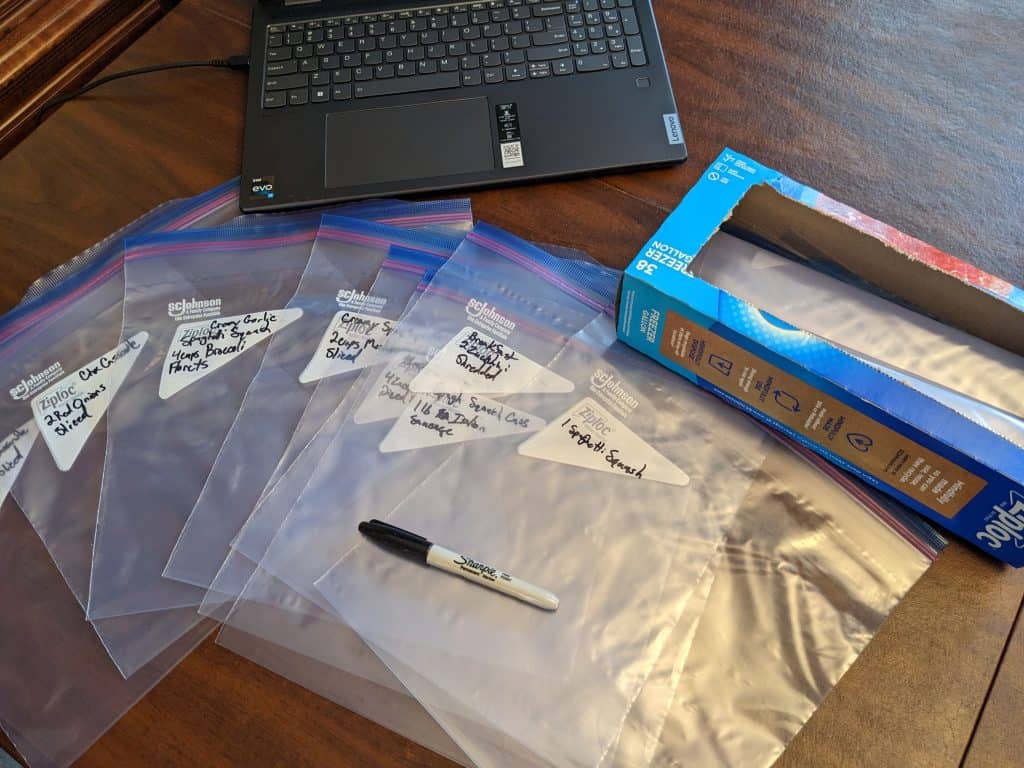

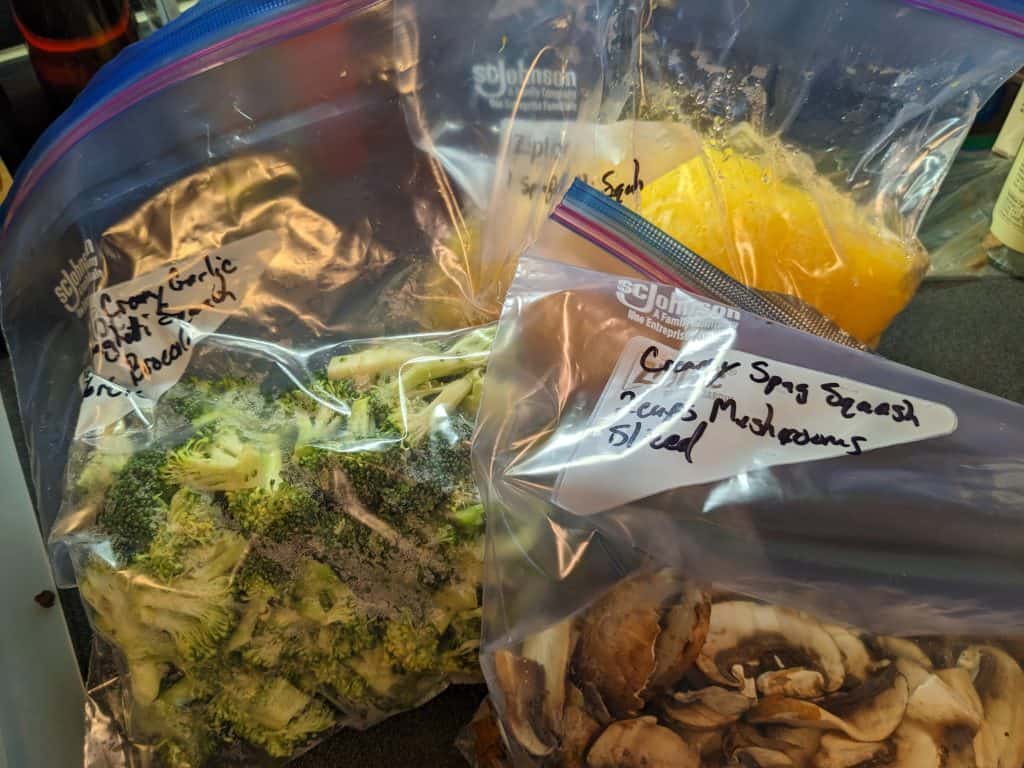
- When you have a variety of ingredients to cut, chop, dice, or slice, order your work to minimize the number of “in between” clean-ups you need to do.
- Start with the produce, then move onto any cooked or cured meat products, and work with raw ingredients last.
- If you are cutting multiple, non-raw meat ingredients for the same recipe, clean up your cutting area as needed, but there’s no need to stop and wash everything since it’s all going in the same dish.
- On the other hand, when you’re working with raw meat, I suggest swapping out your cutting board or thoroughly washing it and your knife between ingredients.
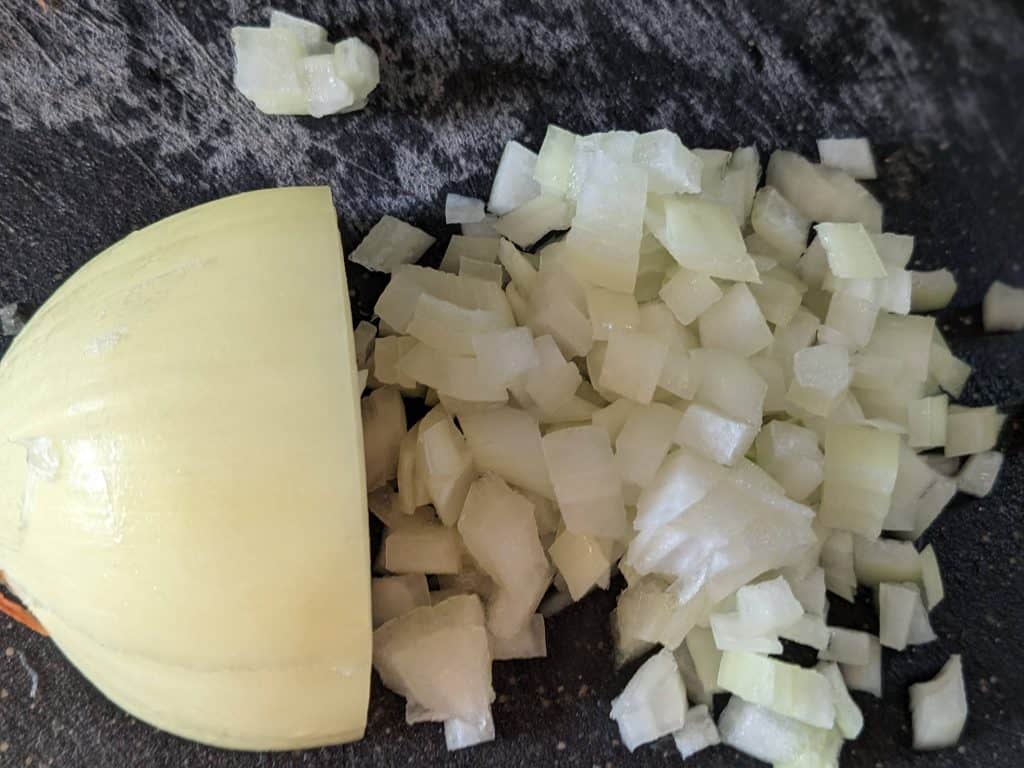
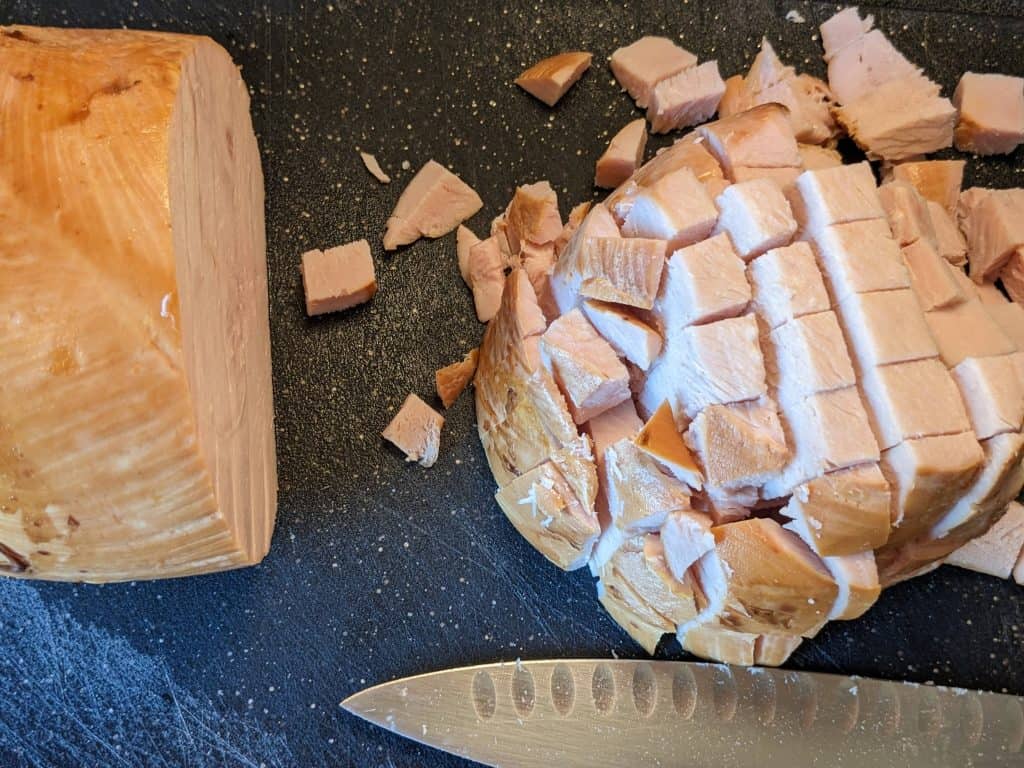
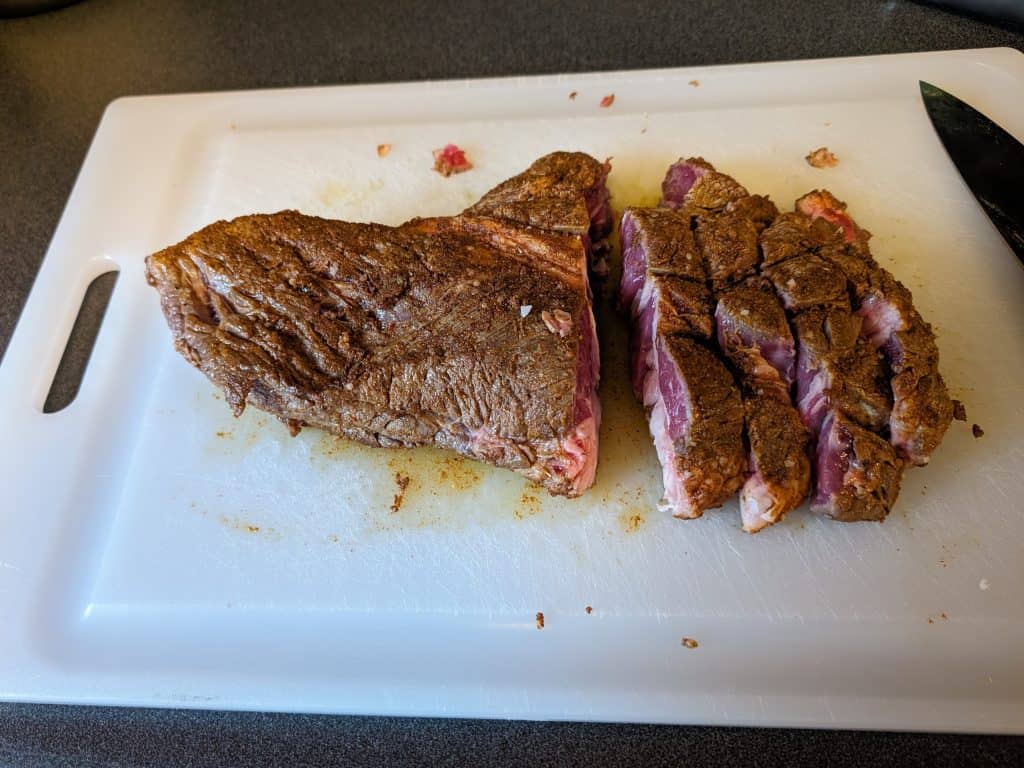
- Use crockpot liners for slow cooker recipes other than soups.
Time and Cooking Space Management
- Prep casseroles in advance in a 9×13-inch dish with a lid and then store them in the fridge. You can either just prep them in advance or fully bake them and just reheat for serving. When you have a lot of recipes going on for a party, this approach allows you to make sure the food is done.
- Assess your cooking devices and recipes to determine if it will be easier to make swaps such as cooking a recipe that usually calls for a long braise in the oven in the slow cooker or Instant Pot instead. Many recipes can be easily translated among those cooking methods to free up oven space. Plus slow cookers and Instant Pots provide the added benefit of having “warming” functions to keep the food at temp for serving.
Hosting
- Always help your guests stay hydrated. While picking a wine, cocktails, whiskey, or beer pairing for your dinner can be a ton of fun; it’s also a great idea to keep filled water pitchers at each end of the table.
- Make a basket of slippers available to your guests.
- This is particularly useful if you are a no shoe house. (We don’t allow shoes in the house, but our floors can get a bit cool in the winter. The slipper basket provides
- To make up my slipper basket, I grabbed a variety of cute, washable slippers in a variety of sizes and tossed in some super thick, very large socks just in case something bigger is needed. I keep them in a little wooden crate near the door.
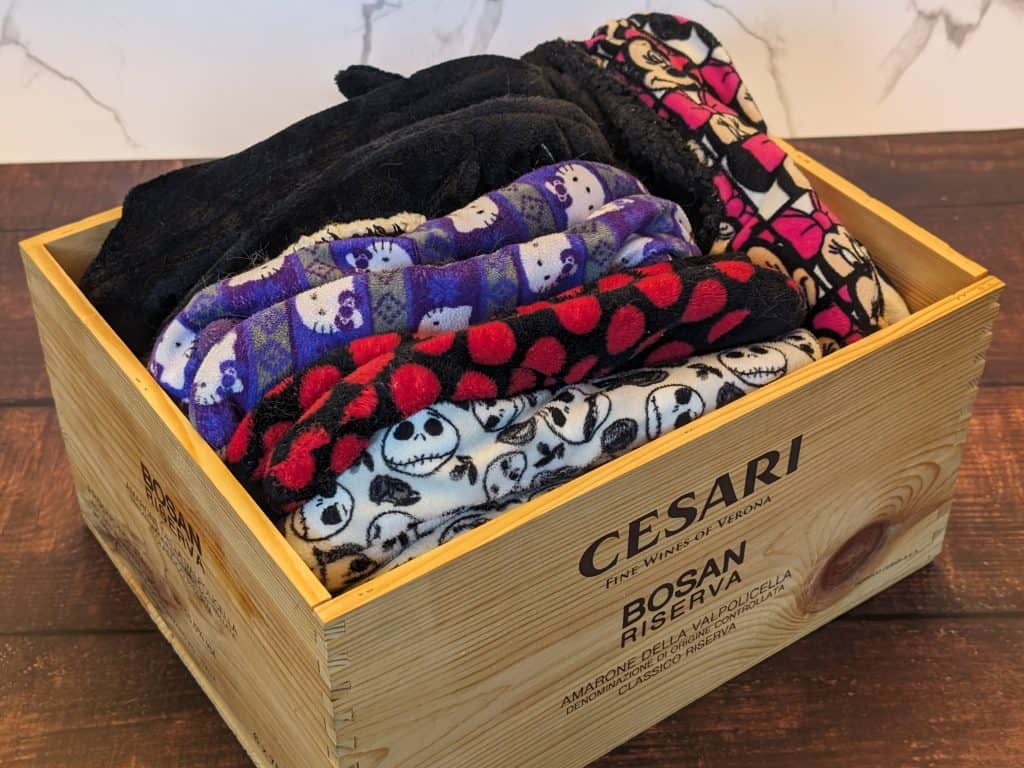
- Grab Some To-Go Containers
- If you are not a fan of leftovers or just wind up with more than you want, a good solution can be to keep To-Go Containers on hand.
- Example: To-Go Boxes
- Give your Sparkling Wine a Quick Chill
- If you’re serving sparkling wine, give it a quick chill before serving.
- If you’re starting with bubbles when your guests arrive, stick the bottle(s) in the fridge about 30 minutes before your party start time.
- You don’t necessarily want it to be “cold.” However, we’ve found that we have fewer incidents of accidental bubble spillage if the bottle has been slightly chilled.
Preparation Savers
- Keep shelf stable, open-and-serve snacks on hand for easy, no effort appetizers.
- Things like roasted nuts–cashews, almonds, pecans, etc.–olives, giardiniera, hot or mild peppers in oil, and pepperoni make some of my favorite easy apps.
- All the prep work that these types of appetizers typically require is opening a jar, can, or package and putting them in your serving dish of choice. If you’re feeling fancy, you could use some classy little cocktail picks or utensils.
- These make some great appetizer choices on any occasion but especially when you’re tight on time.
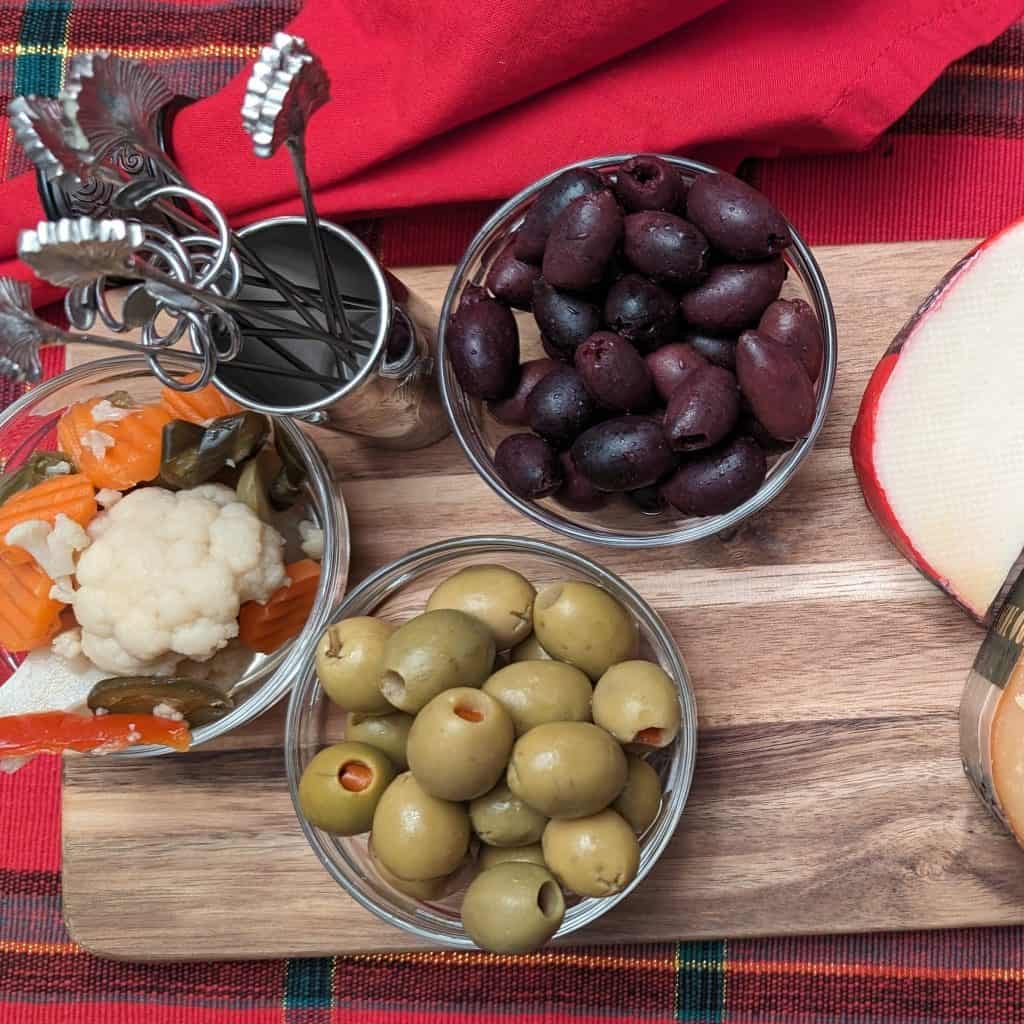
Space Management
- Use a versatile Serving Caddy to streamline your buffet setup and keep plate and utensil sprawl contained.
- I like one that allows me to provide multiple plate sizes without having to set them on top of each other.
- Consider setting up a separate, smaller plate and utensil station on a dessert table.
- Place silverware with the handles up, so that people don’t need to touch the eating surface when picking them up.
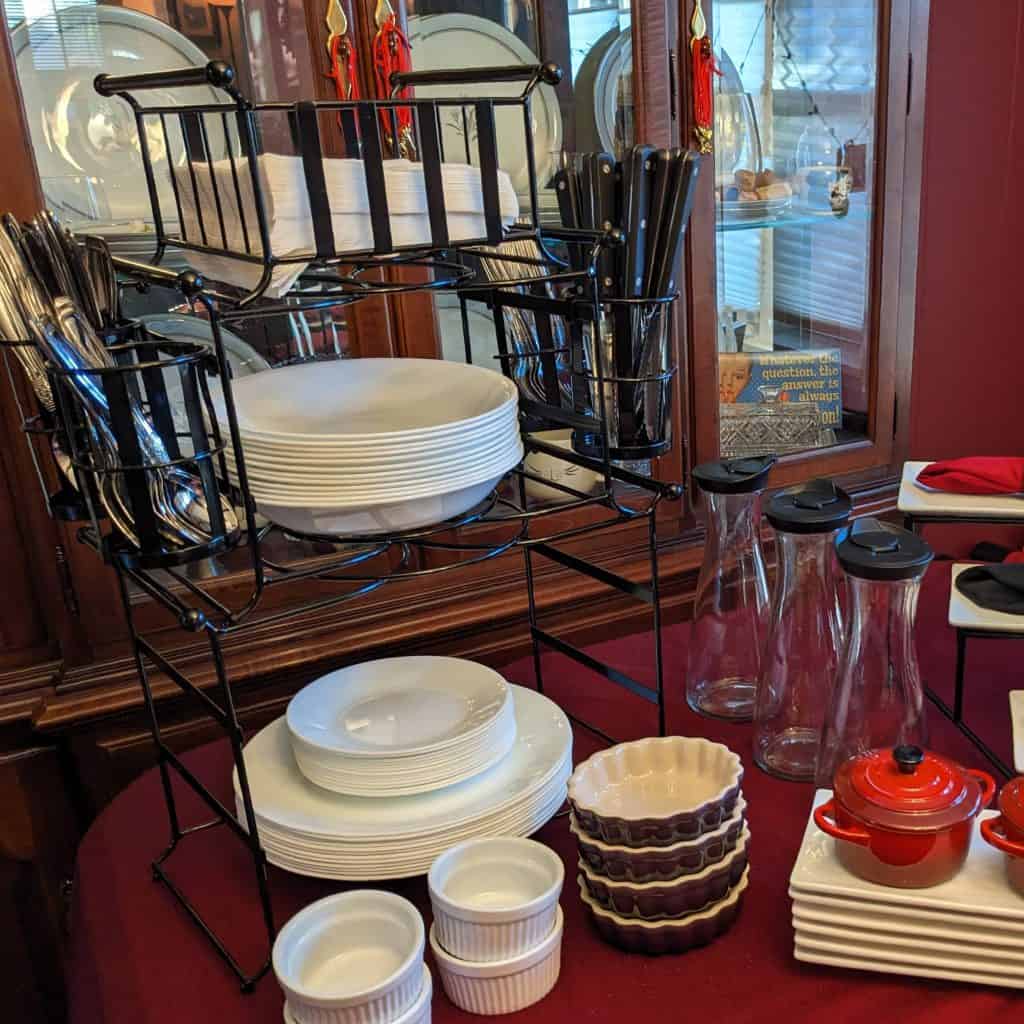
Cooking for a Party
- Leverage Sous Vide Cooking to Make Steaks for a Crowd
- When we’re making filet for a dinner party, we like to buy a whole beef tenderloin.
- We cook the whole thing to rare (120°F to 128°F for 1 to 2.5 hours). Then we remove it from the bag, cut the tenderloin into individual filets of whatever thickness is desired. (We usually let our guests pick.)
- Then we finish them on the stovetop or grill to each guest’s desired level of doneness. This allows us to serve very individualized steaks cooked just in time to serve (a la minute).
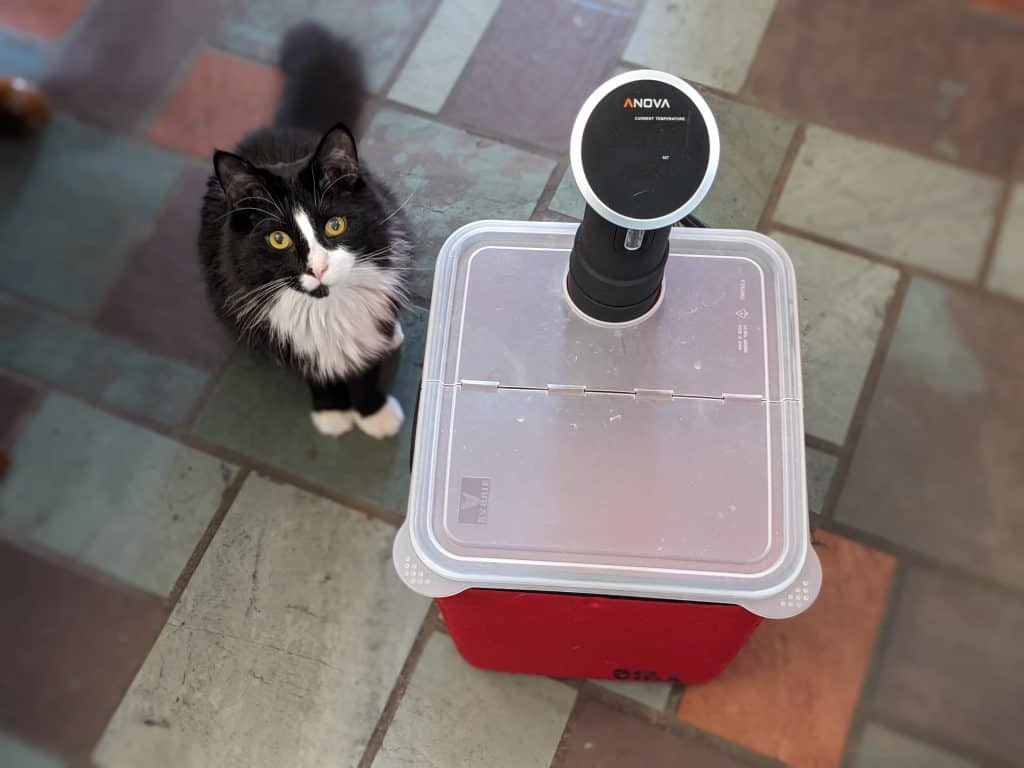
- Batch Your Cocktails
- When we’re doing cocktails for a dinner party, I often like to make a batch or picture of them in advance. For us, this cuts down on playing bartender during the party and simplifies the process for our guests.
- A “typical” pour for a cocktail is about 4 ounces. In our house, we usually do roughly 6 ounce pours. However, this can vary depending on your audience and what else you’re serving. Usually, if we’re doing cocktails, they are a starter (an aperitif or with dessert (a digestif), with wine in between.
- I like to mix any and all ingredients that are not “fizzy” in advance and store it in the fridge. “Fizzy” ingredients like club soda or tonic water get added on a glass-by-glass basis as drinks are served.
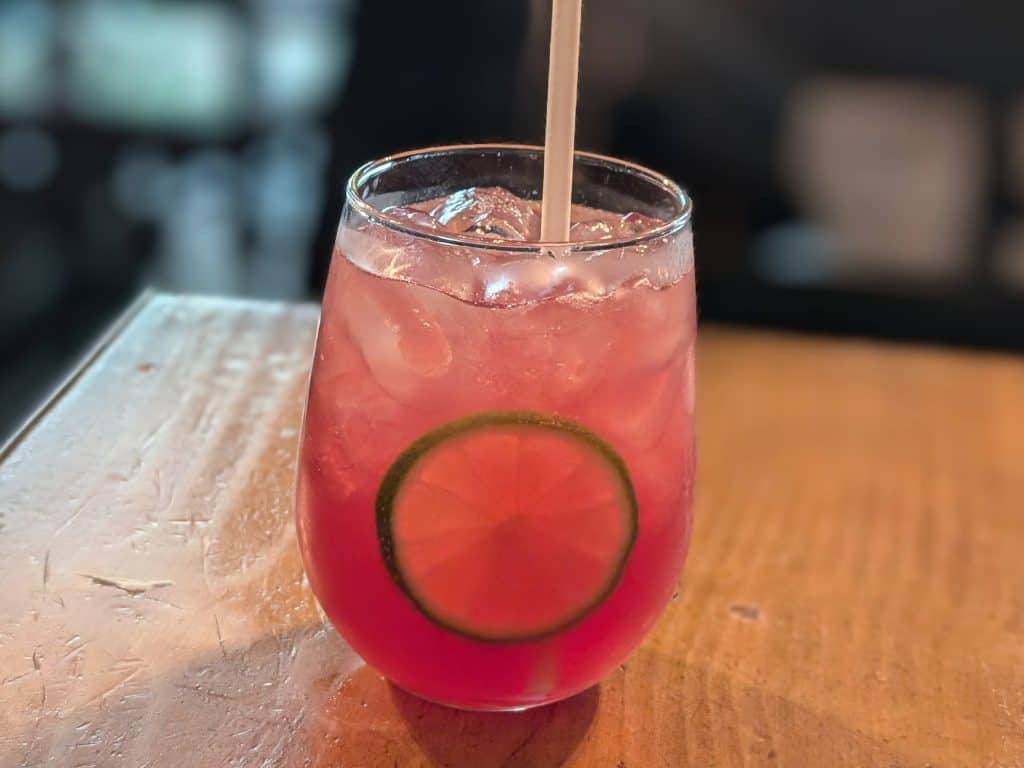
Easy Recipe Tips
- Lean Into Spice Blends for Easy Cooking
- Spice Blends are an easy, awesome way to take simple ingredients and make them dinner party worthy.
- They are very often allergen-free, gluten-free, dairy-free, sugar-free, and so on. That means that you can add a lot of flavor without special diet interference. Of course, what you choose to put them on matters, so choose wisely. The beauty though, is that spice blends are often great enhancements for one, two, or three ingredient dishes (think vegetables, dips, etc.
- However, not all spice blends are created equal. I have the best luck with the slightly smaller production brands who take ingredient transparency very seriously.
- Lately, I’ve been loving these blends from Satya! Use promo code “LORI” for a discount. (Disclaimer: This is an affiliate link and I receive a small commission from any sales with no additional cost to you.)
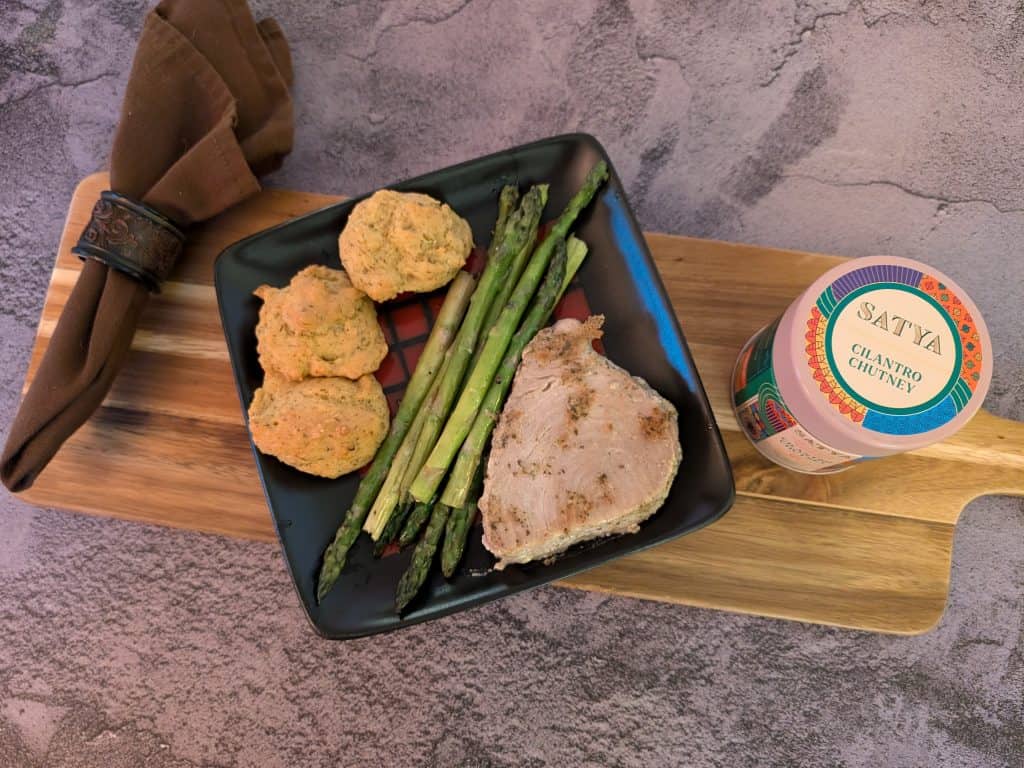
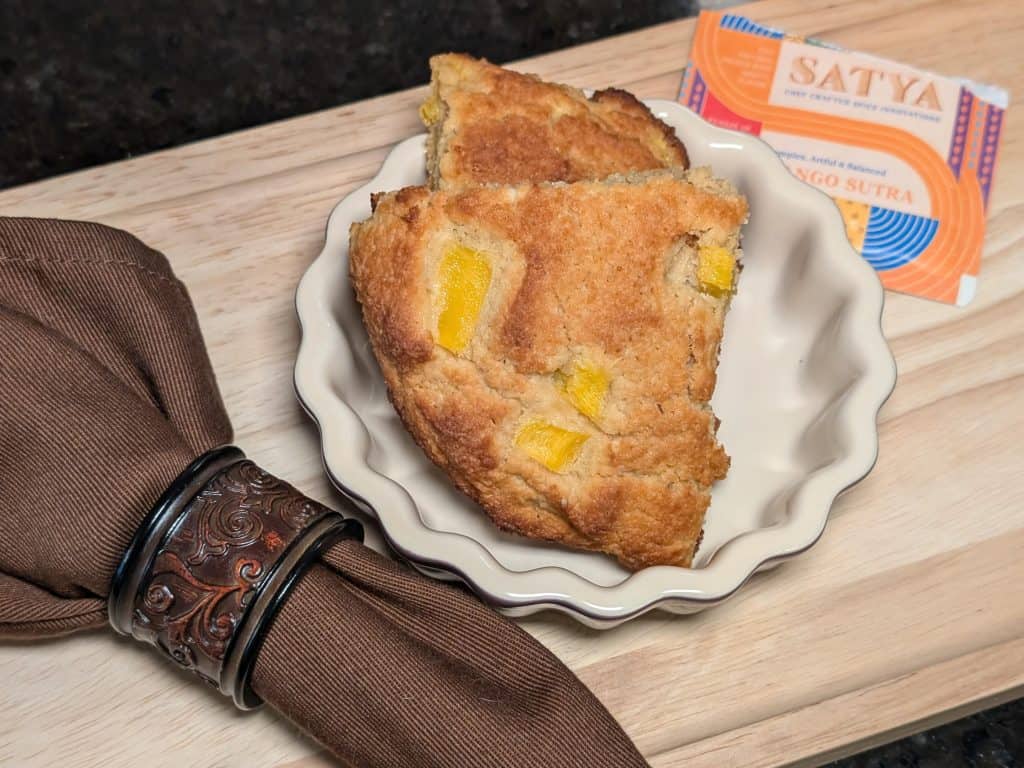
Safety
- Keep Current Fire Extinguishers in Your Kitchen
- Okay, I know this one sounds a bit out there for a party prep tip, but accidents can happen at any time, even in the midst of a dinner party. We’ve definitely had a grease fire pop up at one of ours. Fortunately, we also keep a fire extinguisher in the kitchen and put it out immediately.
- This First Alert EZ Fire Extinguishing Spray extinguishes paper, fabric, wood, grease, and electrical fires. Just make sure you always check the dates on them and keep them current.
- Side Note: This makes an amazing house warming gift! (Thank you Idgie!)


Leave a Reply